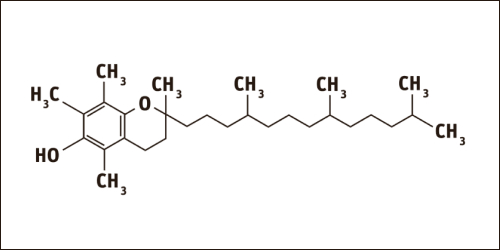Vitamin E
α-Tocopherol
Year of discovery: 1922 | Herbert M. Evans
The most active form of vitamin E is α-tocopherol, which acts as an antioxidant (i.e. stops the chain reaction of free radicals producing even more free radicals). Vitamin E protects cell membranes, proteins and DNA from oxidation and thus contributes to normal cell health. It prevents oxidation of polyunsaturated fatty acids and lipids in cells. Vitamin E is stored in the liver and is safe even in large doses
Main sources of vitamin E
Vitamin E in the form of α-tocopherol is found in edible vegetable oils, especially wheat germ, sunflower and canola oil. Other good sources of vitamin E include green leafy vegetables (e.g., spinach, chard), nuts (almonds, peanuts) and nut pastes, avocados, sunflower seeds, mangoes and kiwi.
Bioavailability of vitamin E
Vitamin E is a fat-soluble component of food. Therefore, the absorption of this vitamin is increased in the presence of fat in a meal.
Risks associated with insufficient or excessive intake of vitamin E
Individuals whose diets consist mainly of starchy staple foods - with irregular intake of edible oils or other vegetable sources of vitamin E - are at greater risk of insufficient vitamin E intake. Vitamin E deficiency leads to burst red blood cells and nerve damage. A recent study in Bangladesh linked low blood levels of vitamin E to an increased risk of miscarriage. Other studies have successfully used vitamin E supplementation to treat non-alcoholic steatohepatitis, a condition commonly found in overweight and obese people. Excessive intake of vitamin E from food sources is very rare.




